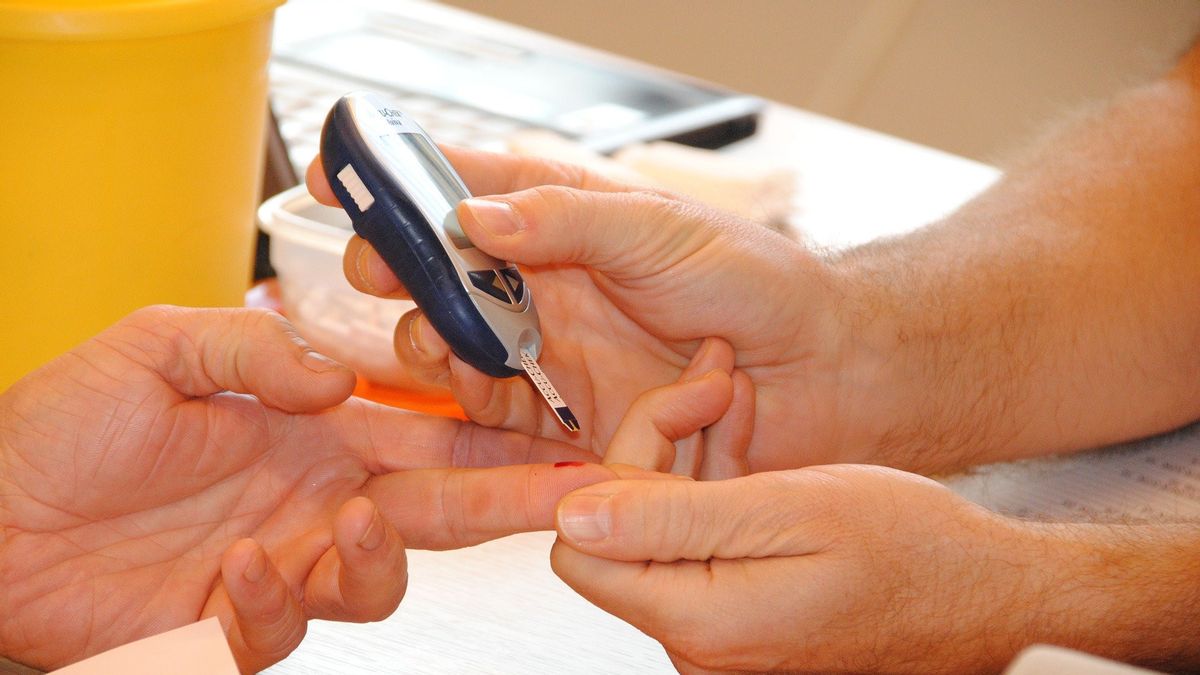JAKARTA - Today, the people of the earth simultaneously campaign for global awareness of diabetes mellitus. Diabetes mellitus is included in the list of the deadliest diseases in the world, including in Indonesia.
The commemoration of World Diabetes Day was first announced by the International Diabetes Federation (IDF) in 1991. Every year, those who focus on eradicating this disease hold a discussion. Topics discussed were lifestyle implications for the disease, as well as topics that intersect with diseases caused by insulin deficiency such as obesity.
This International Diabetes Day commemoration coincides with Frederick Banting's birthday. He and colleagues Charles Best and John James Rickard Macleod discovered insulin in 1922.

Each year the discussion about diabetes mellitus is focused on more specific topics. This year, IDF raises the theme Family and Diabetes because the importance of diabetes awareness starts from the family. The commemoration also voices the role of families in diabetes management, care, prevention and education, as well as raising awareness of the impact of diabetes on families.
An IDF study in 2018 found that most parents have family members who have diabetes. However, it is feared that four out of five parents who experience the disease will recognize the signs. Therefore, according to these findings, it needs education and awareness to help people find warning signs of diabetes early.
Diabetes deserves public attention because WHO data states that this disease is included in the list of the most deadly diseases in the world. Diabetes - which is included in the list of non-communicable diseases - is the number 9 disease causing the most deaths with an estimated number of deaths 1.26 million, the percentage of deaths is 2.2 per year.
When compared with infectious diseases, according to WHO data reviewed by the Indonesian Ministry of Health's Data and Information Center (2018), this disease is the leading cause of death in the world at 63.50 percent.

Globally, an estimated 422 million adults were living with diabetes in 2014, compared with 108 million in 1980. The prevalence of diabetes in the world (with standardized ages) has nearly doubled since 1980, rising from 4.7 percent to 8 percent. 5 percent of the adult population.
As part of the agenda for the United Nations Sustainable Development Goals 2030, member countries have set targets to reduce mortality from non-communicable diseases including diabetes. The target is to reduce this number to a third, in order to achieve Universal Health Coverage (UHC) and provide access to affordable essential medicines by 2030.
Diabetes in Indonesia
In Indonesia, according to the 2018 Basic Health Research (Riskesdas), the prevalence of non-communicable diseases including diabetes showed an increase when compared to Riskesdas 2013. In 2013, the prevalence of people with diabetes mellitus was recorded at 6.9 percent, then in 2018 it increased to 8.5 percent.
Then, the results of Riskesdas 2018 also recorded that the ages with the most diabetes mellitus were in the range of 55-64 years and 65-74 years. In addition, more people with diabetes mellitus in Indonesia are female (1.8 percent) than male (1.2 percent).
If you look at the regions, the highest diabetes mellitus is in DKI Jakarta and the lowest is in NTT. Then for domicile areas, there are more diabetes mellitus sufferers in urban areas (1.9 percent) compared to rural areas (1.0 percent).
The increase in the prevalence of non-communicable diseases is related to lifestyle, including smoking, consumption of alcoholic beverages, physical activity, and consumption of fruits and vegetables.
Prevention process
To prevent diabetes, the Ministry of Health has its own program. Her name is CERDIK.
Regular health checks to control body weight to stay ideal and not risk getting sick easily, check blood pressure, blood sugar and cholesterol regularly. Get rid of cigarette smoke and don't smoke. Be diligent in doing physical activity for at least 30 minutes a day, such as exercising, walking, cleaning the house. Try to do it properly, correctly, regularly and measurably. A balanced diet by consuming healthy foods and balanced nutrition, consuming at least 5 servings of fruit and vegetables per day, as much as possible suppressing sugar consumption to a maximum of 4 tablespoons or 50 grams per day, avoiding sweet or carbonated foods / drinks. Enough rest. Manage stress properly.The English, Chinese, Japanese, Arabic, and French versions are automatically generated by the AI. So there may still be inaccuracies in translating, please always see Indonesian as our main language. (system supported by DigitalSiber.id)









